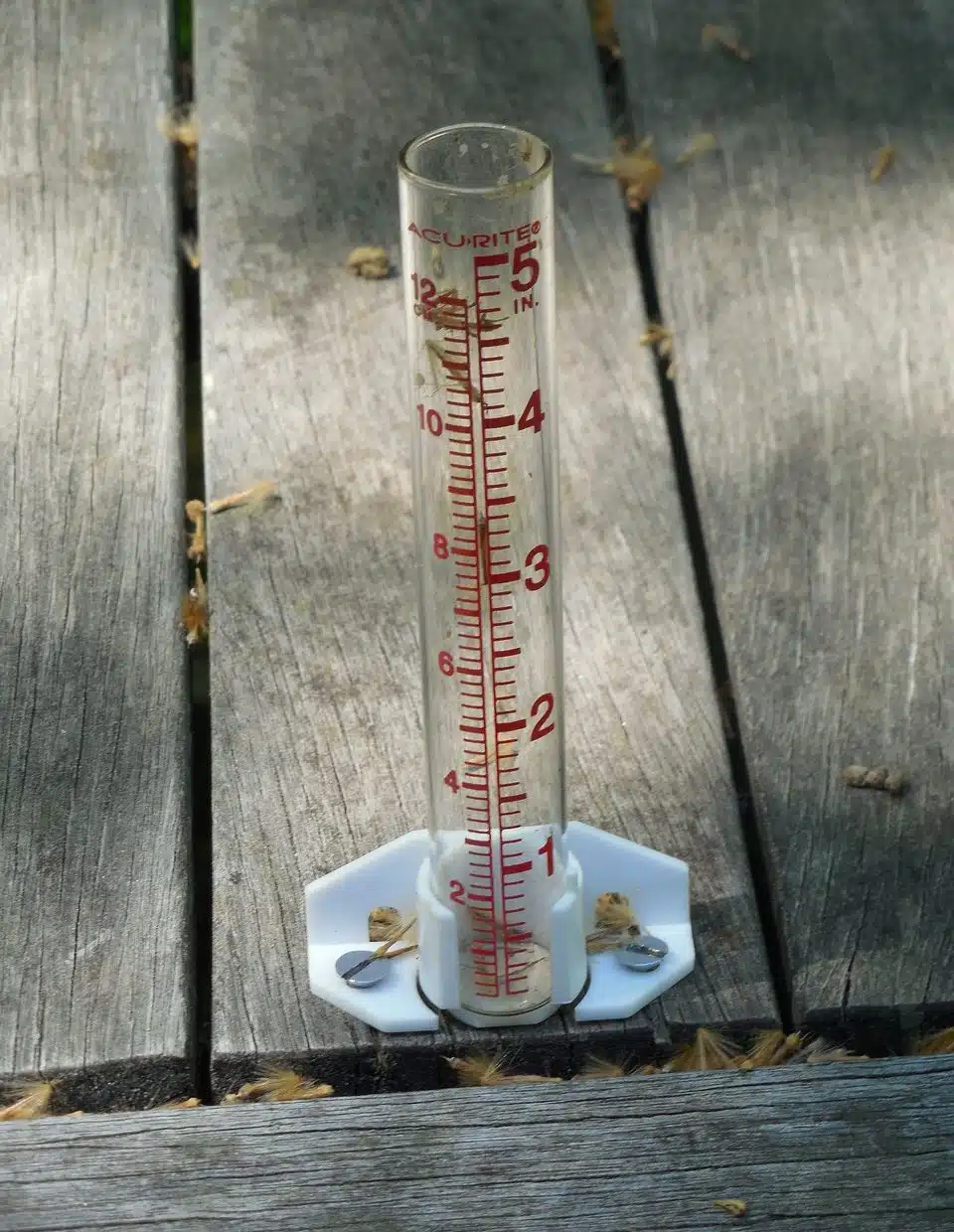
A rain gauge allows you to collect and measure precipitation.
A rain gauge is a device used to calculate the rainfall that falls in a certain location during a certain amount of time. What this instrument does is collect the fallen rain and determine how many millimeters of height what is collected reaches.
In order to find the etymological origin of the term we have to go to Latin and Greek. And it is the result of the sum of two words from both languages: the Latin noun pluvia , which can be translated as "rain" ; and the Greek term metron , which is synonymous with "measure" .
Features of a rain gauge
Basic rain gauges have an opening through which the rain enters, which falls through a funnel into a container marked with a ruler . By observing how far the water reaches in this rule, it is possible to know how many millimeters of rain fell from the time the collection began until the observation took place.
The first rain gauges were developed several centuries before Christ . Measuring rainfall made it possible to estimate how crops would yield, which helped to perfect the tasks of agriculture .
The simplest rain gauges (which were nothing more than containers with a ruler) gave way to others of greater complexity, capable of measuring rain constantly, without the need for an operator to approach every certain amount of time (usually, twelve hours) to take the corresponding notes.
Today rain gauges continue to be one of the most important instruments of meteorological stations , along with thermometers (to measure temperature), anemometers (measure wind speed) and barometers (intended to calculate air pressure). atmosphere).

Rain gauges can have different characteristics.
Classification according to type
There are various types of rain gauges, among which we would highlight the following:
- Manual rain gauge , which simply indicates the rain that has fallen in a specific place.
- Siphon rain gauge , which is commonly used to know the average intensity of rain in a certain period of time.
- Totalizing rain gauge , which indicates the amount of water that has fallen in the twelve-hour interval.
Creation, installation and use of a rain gauge
At home, it is possible to construct a rain gauge with a jar or other container and a funnel. It is only necessary to mark the scale with a ruler and leave the rain gauge outdoors (a garden, a balcony, a terrace, etc.).
In addition to everything stated above, other fundamental aspects regarding the installation and use of the rain gauge must be taken into account, among which we would highlight the following:
- One should never be placed near clotheslines, waterfalls, walls or under the branches of a tree.
- The support on which the aforementioned device is placed must be kept in a vertical position at all times.
- To keep it always clean you have to undertake a very simple action. You simply have to use drinking water and a little mild detergent.
- In activities such as agriculture, the use of rain gauges is essential to know the rain that is going to fall. And these are basic to know when to carry out certain plantations or when the crops may suffer certain damages.
